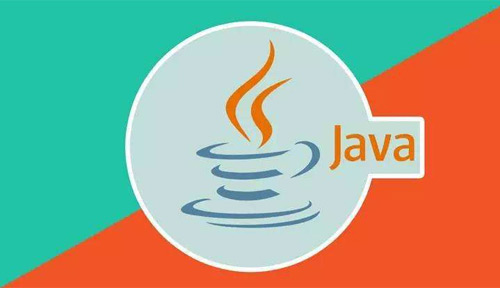惠州什么是Java异步I/O?_北大青鸟IT学校
作者:邓华发布时间:2021-04-14分类:Java技术浏览:1127
相信大家在学习Java的过程都会遇到各种各样的问题,例如:什么是Java异步I/O?那么下面我们一起来看看惠州北大青鸟学术部老师是怎么讲解这道题的。
在同步文件I/O中,对I/O操作的请求将等待,直到I/O操作完成。
在异步文件I/O中,I/O操作的请求由系统异步执行。
当系统完成文件I/O时,它通知应用程序其请求的完成。
java.nio.channels.AsynchronousFileChannel类表示异步文件通道。
AsynchronousFileChannel类的静态open()方法获取AsynchronousFileChannel类的实例。
以下代码显示了如何获取WRITE的异步文件通道。
Path path = Paths.get("C:\\Java_Dev\\rainbow.txt");
AsynchronousFileChannel afc = AsynchronousFileChannel.open(path, WRITE, CREATE);
AsynchronousFileChannel提供了两种方法来处理异步文件I/O操作的结果。
Using a java.util.concurrent.Future object.
Using a java.nio.channels.CompletionHandler object.
支持异步文件I/O操作的AsynchronousFileChannel类的每个方法有两个版本。
一个版本返回一个Future对象,我们可以使用它来处理所请求的异步操作的结果。
Future对象的get()方法返回写入文件通道的字节数。
以下代码使用返回Future对象的write()方法的版本:
ByteBuffer dataBuffer = a buffer;
long startPosition = 0;
Future<Integer> result = afc.write(dataBuffer, startPosition);
一旦我们得到一个Future对象,我们可以使用轮询方法或阻塞等待方法来处理异步文件I/O的结果。
下面的代码显示了轮询方法,它将继续调用Future对象的isDone()方法,以检查I/O操作是否完成:
while (!result.isDone()) {
}
int writtenNumberOfBytes = result.get();
AsynchronousFileChannel类的另一个版本的方法获得一个CompletionHandler对象,当请求的异步I/O操作完成或失败时,该对象的方法被调用。
CompletionHandler接口有两个方法:completed()和failed()。
当所请求的I/O操作成功完成时,将调用completed()方法。
当请求的I/O操作时失败,则调用failed()方法。
以下代码使用Attachment类的对象作为完成处理程序的附件:
class Attachment { public Path path; public ByteBuffer buffer; public AsynchronousFileChannel asyncChannel;
}class MyHandler implements CompletionHandler<Integer, Attachment> {
@Override public void completed(Integer result, Attachment attach) {
// Handle completion of the I/O operation
}
@Override public void failed(Throwable e, Attachment attach) {
// Handle failure of the I/O operation
}
}
以下代码使用MyHandler实例作为异步写操作的完成处理程序。
MyHandler handler = new MyHandler();
ByteBuffer dataBuffer = get a data buffer;
Attachment attach = new Attachment();
attach.asyncChannel = afc;
attach.buffer = dataBuffer;
attach.path = path;
// Perform the asynchronous write operation
afc.write(dataBuffer, 0, attach, handler);
以下代码演示了如何使用CompletionHandler对象来处理对文件的异步写入的结果。
import static java.nio.file.StandardOpenOption.CREATE;
import static java.nio.file.StandardOpenOption.WRITE;
import java.io.IOException;
import java.nio.ByteBuffer;
import java.nio.channels.AsynchronousFileChannel;
import java.nio.channels.CompletionHandler;
import java.nio.charset.Charset;
import java.nio.file.Path;
import java.nio.file.Paths;public class Main { public static void main(String[] args) throws Exception {
Path path = Paths.get("test.txt");
AsynchronousFileChannel afc = AsynchronousFileChannel.open(path, WRITE,
CREATE);
WriteHandler handler = new WriteHandler();
ByteBuffer dataBuffer = getDataBuffer();
Attachment attach = new Attachment();
attach.asyncChannel = afc;
attach.buffer = dataBuffer;
attach.path = path;
afc.write(dataBuffer, 0, attach, handler);
System.out.println("Sleeping for 5 seconds...");
Thread.sleep(5000);
} public static ByteBuffer getDataBuffer() {
String lineSeparator = System.getProperty("line.separator");
StringBuilder sb = new StringBuilder();
sb.append("test");
sb.append(lineSeparator);
sb.append("test");
sb.append(lineSeparator);
String str = sb.toString();
Charset cs = Charset.forName("UTF-8");
ByteBuffer bb = ByteBuffer.wrap(str.getBytes(cs));
return bb;
}
}class Attachment { public Path path; public ByteBuffer buffer; public AsynchronousFileChannel asyncChannel;
}class WriteHandler implements CompletionHandler<Integer, Attachment> {
@Override public void completed(Integer result, Attachment attach) {
System.out.format("%s bytes written to %s%n", result,
attach.path.toAbsolutePath()); try {
attach.asyncChannel.close();
} catch (IOException e) {
e.printStackTrace();
}
}
@Override public void failed(Throwable e, Attachment attach) { try {
attach.asyncChannel.close();
} catch (IOException e1) {
e1.printStackTrace();
}
}
}
想了解更多关于Java的资讯,可以来惠州北大青鸟新方舟校区了解一下。

Java
标签:惠州计算机JAVA软件开发惠州计算机Java软件开发惠州计算机JAVA培训惠州计算机JAVA软件开发学校惠州计算机Java软件开发培训JAVAJava软件开发北大青鸟IT计算机学校北大青鸟IT软件学校北大青鸟IT学校
- Java技术排行
- 标签列表
-
- Java (3694)
- 北大青鸟 (3713)
- 软件开发 (3613)
- JAVA (3413)
- UI设计入门 (2093)
- 惠州北大青鸟 (4375)
- 惠州IT培训 (2558)
- UI设计培训 (2090)
- 惠州UI设计培训 (2095)
- 惠州UI设计培训学校 (2090)
- 惠州计算机软件培训 (6260)
- 惠州计算件软件开发 (6260)
- 惠州计算机软件基础 (6261)
- 惠州计算机JAVA培训 (3574)
- 惠州计算机Java软件开发 (3620)
- 惠州计算机JAVA软件开发 (4645)
- 惠州计算机JAVA软件开发学校 (3338)
- 惠州计算机Java软件开发培训 (3338)
- 北大青鸟IT计算机学校 (5048)
- 北大青鸟IT软件学校 (5062)
- 北大青鸟IT学校 (5059)
- 惠州计算机UI设计软件开发 (2088)
- UI设计基础教程 (2088)
- UI设计是什么 (2088)
- UI设计教程 (2088)
- 网站分类
-
- 计算机教程
- 计算机入门
- 职业学校
- 新闻动态
- 专业课程
- 热门技术
- SEO
- 培训教程
- windows
- linux教程
- 系统集成
- 网站开发
- Html5
- 办公软件
- 师资力量
- 热点问答
- 联系我们
- 计算机学校
- 惠州计算机学校
- 河源计算机学校
- 广州计算机学校
- 深圳计算机学校
- 湛江计算机学校
- 佛山计算机学校
- IT计算机培训信息
- 设计专业
- UI
- 影视特效
- 游戏动漫设计
- Photoshop
- AI设计
- 软件教程
- Java技术
- C语言/C++语言培训
- C#
- Python技术
- PHP
- 数据库
- SQL Server
- 网络教程
- 网络安全
- 网络营销
- 软件专业
- 大数据专业
- 前端开发专业
- 软件测试专业
- Python专业
- 软件实施
- 珠海计算机学校
- 初中生学什么好
- 计算机认证
- 文章归档
-
- 2024年11月 (14)
- 2024年10月 (32)
- 2024年9月 (29)
- 2024年8月 (68)
- 2024年7月 (59)
- 2024年6月 (43)
- 2024年5月 (48)
- 2024年4月 (80)
- 2024年3月 (65)
- 2024年2月 (54)
- 2024年1月 (25)
- 2023年12月 (12)
- 2023年11月 (73)
- 2023年10月 (134)
- 2023年9月 (34)
- 2023年8月 (3)
- 2023年7月 (3)
- 2023年6月 (12)
- 2023年5月 (30)
- 2023年4月 (72)
- 2023年3月 (11)
- 2023年2月 (34)
- 2023年1月 (37)
- 2022年12月 (78)
- 2022年11月 (359)
- 2022年6月 (1193)
- 2022年5月 (570)
- 2022年4月 (1567)
- 2022年3月 (982)
- 2022年2月 (54)
- 2022年1月 (182)
- 2021年9月 (308)
- 2021年8月 (1704)
- 2021年7月 (2423)
- 2021年6月 (1806)
- 2021年5月 (1569)
- 2021年4月 (1380)
- 2021年3月 (1255)
- 2021年2月 (709)
- 2021年1月 (1521)
- 2020年12月 (3626)
- 2020年11月 (1646)
- 2020年10月 (1046)
- 2020年9月 (592)
- 最近发表
-
- 清远信息:2024年广清杯清远南粤家政技能大赛举行决赛|||计算机培训机构
- 汕尾信息:陈良川带队到汕尾技师学院调研|||计算机职业技能培训班
- 东莞信息:凤岗凤岗镇组织召开社保参保缴费及劳动用工政策宣讲会|||计算机软件培训学校
- 阳江信息:2024年度注册城乡规划师职业资格考试的合格标准是怎样的?|||计算机软件培训学校
- 阳江信息:职业技能提升补贴对象有哪些?|||大学生计算机培训学校
- 清远信息:清远市首家社保服务合作网点在清城区举办启动仪式|||计算机职业技能培训班
- 汕头信息:招聘658名中高端人才!2024年汕头市引进中高端人才专场招聘会举行|||北大青鸟计算机培训中心
- 东莞信息:广东省社保智能经办现场会在东莞召开|||大学生计算机培训学校
- 东莞信息:东坑镇举办2024年重点群体系列招聘活动|||计算机职业技能培训班
- 东莞信息:万江万江街道成功举办第四届粤菜师傅烹饪技能竞赛|||广州计算机编程培训


